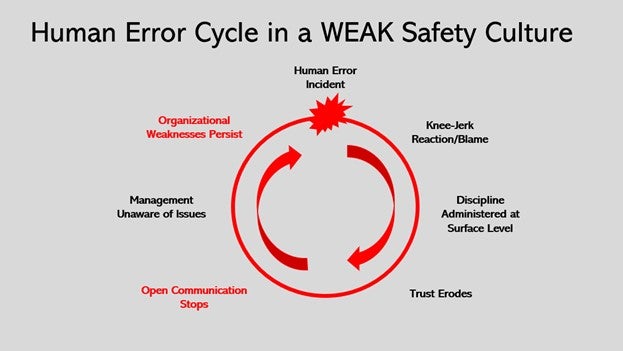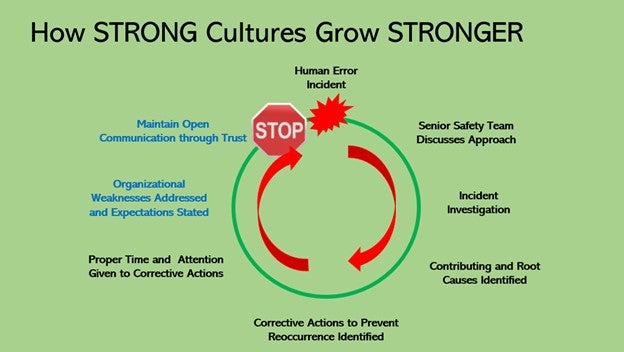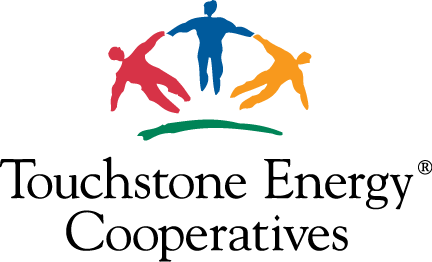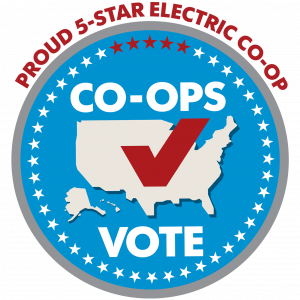This article is the second in a series of three articles written in response to the input provided for the Co-op Forum in the April 2024 edition of RE Magazine.
THE QUESTION: HOW HAS RISK ASSESSMENT EVOLVED IN THE LAST DECADE?
Last quarter, we focused on the danger of separating operations and safety and the need to evolve to a place where we simply operate safely. We also discussed moving from a compliance approach, focused on checking the boxes, to a standard of care where humility is established by leadership to provoke a great culture of safety.
In part 2, we will reflect on the following portion of the response: We’re now setting clearer expectations and “coaching” the crews in a positive environment. What “happens on the crew stays on the crew” has evolved into a common safe space where open communication allows workers with good intentions to share their shortcomings. How? By going from a culture of blame to a mindset where people are part of the solution.
HAVE YOU STARTED “COACHING” OR ARE YOU STILL “CATCHING?”
I’ll never forget when I officially introduced the “coaching” approach to our GM/CEOs several years ago in a meeting of managers prior to kicking off the COLD (COLT Onsite Lineworker Development) program. I expected some pushback and received none. It was on this day when I began understanding how far Ohio’s distribution co-ops had come in our safety programs. And I also want to give credit to Federated crew observers who have been taking this coaching approach with our crews for years, laying much of the groundwork for what we have in place today.
In years past, if a safety violation was found, we were always so worried about the proper documentation and resultant discipline for that violation. We made sure to do so even if it was our fault due to organizational failures such as lack of knowledge or understanding, or a simple mistake, a lapse, or some other type of human error.
There are definitely times when a discovered violation needs to move beyond coaching, but we need to make sure it's only after very clear expectations have been established on our end. Instances like this should be a rare occurrence. An easy way to approach this situation is asking a simple question: “Was it will or skill?” In other words, did someone willfully violate a life-saving rule? Or was it simply a lack of skill or knowledge, or some type of human error?
In the past, it was always “that guy” who was the problem. We were always looking for someone to pin the blame on and maybe even fire, especially if the safety violation resulted in some type of incident beyond a near miss such as an injury or property damage. And the corrective action from the root cause analysis? “They just need to be more careful.”
Now, we certainly understand that there are some “bad characters” that we hired who need to be corrected, perhaps even purged, and that’s why we must be so effective in our screening process, so that we don’t introduce new employees into the organization that act as a contagious infection. I don’t personally have such data to back it, but I do believe data exists that proves the number one reason people are hired is for their ability, but the number one reason that people get fired is their lack of character. We have seen that play out a number of times right here just in Ohio. Sometimes in our haste to immediately get someone on call or an experienced glover up into the primary, we’ll risk our entire workforce to satisfy that need by ignoring clear character flaws, egotistical approaches, and other red flags during the interview process. We’ve seen this mistake destroy years and even decades of great work building a safety program. Prevention is so much better than cure here.
We’ve learned that when we have good people, the most effective approach is to coach them in their jobs. Part of this transition has been caused by the continually evolving multi-generational workforce and part of it has been from us learning the most effective methods of safety and training. A good crew observation is workforce development at its finest, but one of the biggest enemies of our crew observation programs is the past. Linemen have really long memories of those “catching” days. I had one group of linemen in a CtZ Phase 2 session, in so many words, tell us that it would never be possible to have a positive crew observation and anyone that says otherwise is a liar. That was a very tough session.
The thought of someone else observing us while we work is by nature a difficult thing to handle and it can take many positive visits to overcome this tension in one’s mind. And if a past crew observation has resulted in disciplinary action (even if it was rightfully so), then it will take a really long time to climb this hill. If it was in response to a human error incident, this hill will take yet even longer to climb. If your guys actually enjoy crew observations, congratulations! You have made great progress.
Psychological safety is real, and we need to understand how the lack of it will surely devastate our safety programs. That’s another article for another day, but it starts with trust that is built on solid relationships between management and workers. If there is no trust, then we have no foundation for an effective safety program. If employees feel they can be themselves and that they can freely express their thoughts, ideas, and even shortcomings without fear of consequences, good culture naturally follows. Effective crew observations must include such principles and focus on the positive things while very carefully coaching any identified areas of needed improvement.
PEOPLE MUST BE PART OF THE SOLUTION
In this quarter’s safety review, Steve Savon, Safety and Regulatory Consultant, OEC, will walk our co-ops through an “after action review” where the very ones who were part of a mistake, near miss, or incident are used as one of the main tools to help strengthen whatever process was involved. We are excited to deliver this powerful approach to incident investigation because it can also be used in members’ services, accounting, information technologies, or any other department, not just safety. Furthermore, it is focused on leading indicators rather than lagging.
This “after action review” is just one more step in moving away from a culture of blame to a belief that people should be a part of the solution. We felt that this approach at this stage with our current safety culture and climate would be extremely appropriate and potentially powerful. While reducing unnecessary bureaucracy, this approach brings everyone together in the same room to figure out how we can just all get better. It provides an expressway past the documentation directly to the “corrective actions” portion of a traditional investigation by verbally working through the facts, contributing factors, and root causes with everyone in the room. Proper reviews should almost always result in the organization needing to improve as well as those who were involved in the incident and everyone else in between, resulting in a list of corrective actions assigned to certain folks for completion.
This new type of incident review is built on the premise that we have mostly good people working for us with good intentions. If that, however, is not the case in a certain situation, then an informal after action review is certainly not the best approach. Nor would it be the best approach in a serious injury or fatality or other type of complex situation where a formal investigation would be necessary.
When people have a voice where they are not concerned about repercussions, this will organically result in a culture of open communication. Whenever an organization has an incident that occurs as a result of human error, your safety culture will indeed change. It will either change for the better or for the worse because everyone will be watching how we respond. The following graphic gives an example of an improper response to human error and how things will respond accordingly.

Such a response is an open communication killer that results in a number of organizational blind spots. In such a culture, senior staff would never find out what’s really happening on the crew through their own confession. This is the type of culture that can be ripe for an SIF-type incident without anyone having so much as a clue. What happens on the crew here stays on the crew because, at the foundation, trust has been eroded. Linemen can smell this a mile away.
On the other hand, this next graphic reveals how a human error incident looks in a great culture and notice how it first begins with a meeting at the senior level because strong organizations understand the potential serious consequences of an improper approach to such an incident.

Here, the focus is on getting better and setting clear expectations moving forward. Such a response strengthens an already-strong culture because it’s all based on open communication with trust through relationships as the foundation.
IN SUMMARY
What makes cooperatives who we are today is our people, so the approach we take with our people matters, and it matters a lot. An approach based on employee/boss type relationships puts us into a vulnerable place while an environment of trust based on relationships and open communication results in a feeling of family which is a big part of the cooperative difference.
As risk assessment has evolved, how have we continued to strengthen the trust factor? Let’s implement processes into our daily routines that strengthen relationships and open discussion where our people become part of the solution rather than the problem. And even more importantly, let’s be sure to protect our workers and our cultures by keeping the door closed to those who would come in to destroy them – even if they are good linemen.





